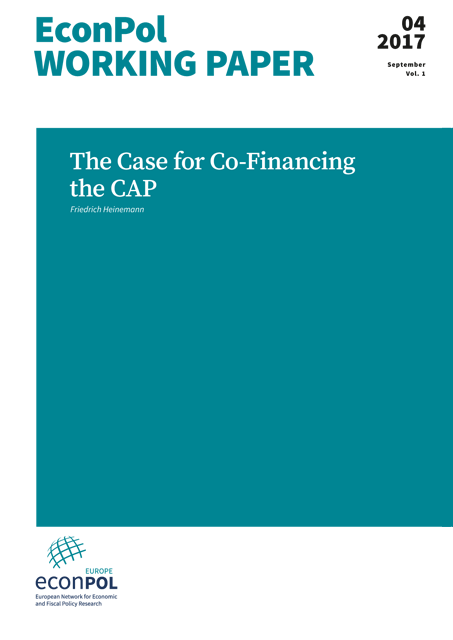The Case for Co-Financing the CAP
The Common Agricultural Policy (CAP) was set up in a time when the memory about post-war food shortage was fresh, Europe was a large net importer of agricultural products, agricultural production was still highly labour-intensive, food was a major item in a typical consumer basket and significant shares of the work-force received their major income from the agricultural sector. The CAP objectives enshrined in Art. 39 TFEU clearly reflect this historical situation. When the Treaty of Rome was signed in 1957, it was understandable that the standard of living of the agricultural workforce was a major issue and that "reasonable prices" for consumers were regarded as a matter of social stability. Today, Art. 39 objectives are outdated. At the 60th anniversary of the Treaty of Rome, agricultural production is capital-intensive with a low share of total labour employed. European agricultural production is highly competitive leading to a net-export situation for important agricultural commodities and a low food spending share in consumer baskets. Read in this paper by network member Friedrich Heinemann/ZEW, prepared with support of the Bertelsmann Stiftung, what has (not) been achieved by reforms, why CAP in its current size is part of the problem and which conclusions should be drawn.
Heinemann, Friedrich: "The Case for Co-Financing the CAP", EconPol Working Paper 4, September 2017.
